Get PeakVisor App
Sign In
Search by GPS coordinates
- Latitude
- ° ' ''
- Longitude
- ° ' ''
- Units of Length

Yes
Cancel
Share ×

Scan the QR code and open PeakVisor on your phone
❤ Wishlist ×
Choose
Delete
Famous for its rich cultural heritage, ancient traditions, beautiful mountain scapes, lush forests, and gourmet cuisine, Japan is an island nation located in East Asia. The country contains 12955 named mountains, the highest and most prominent of which is Mount Fuji (3,776 m/12,388 ft).

The country of Japan (日本国 or 日本) is located off the coast of eastern Asia. Despite being one of the world’s most densely populated and highly urbanized countries, Japan is known for having a large diversity of landscapes, though approximately three-fourths of the country can be categorized as mountainous while the rest is mostly coastal plains.
As an island nation, Japan contains an archipelago of 6,852 islands, of which only 430 are currently inhabited. Within those 430 islands, the bulk of the country’s population lives on the five main islands of Japan, which are Hokkaidō, Okinawa, Kyūshū, Honshū, and Shikoku.
With a total area of 377,975 square kilometers (145,937 square miles), Japan is the world’s 62nd largest country after Iraq, Paraguay, Zimbabwe, and Norway. Interestingly, this places it just slightly ahead of Germany, Republic of the Congo, Finland, and Vietnam in terms of its total area. Among island nations, Japan is the fourth largest in terms of total area, after Indonesia, Madagascar, and Papua New Guinea.
That being said, Japan has a total population of about 125.4 million people as of 2021, which marks it the world’s 11th most populous country after Nigeria, Bangladesh, Russia, and Mexico. This also makes it the 25th most densely populated country after Belgium, Philippines, and Sri Lanka.
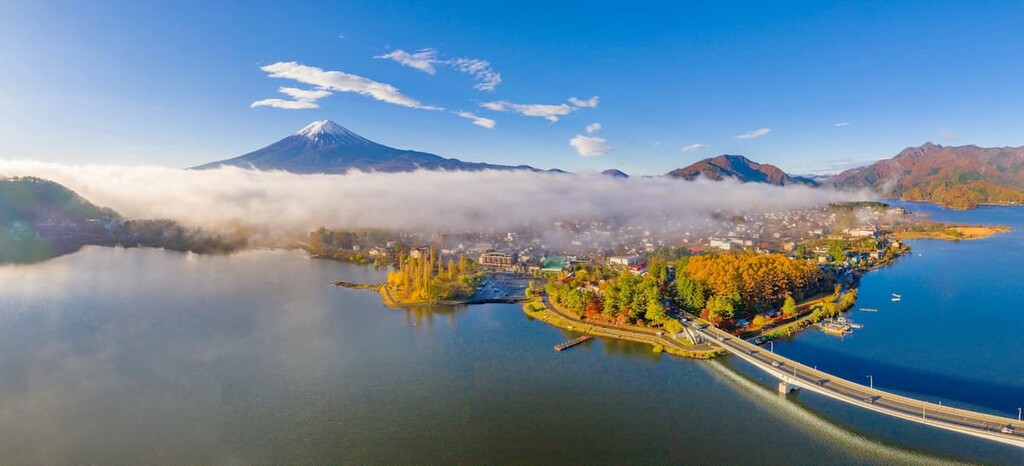
Interestingly, however, Japan is not the most densely populous island nation. Rather, it is the 13th most densely populated island nation as of 2021, lagging far behind much smaller nations, like Singapore, Bahrain, Malta, and the Maldives.
Due to the fact that Japan is an island nation, it has no land borders. But, it is separated from Russia, China, North Korea, and South Korea by the Sea of Japan to the west. Meanwhile, it is bordered by the Sea of Okhotsk to the north, which separates it from the Kamchatka Peninsula in Russia. The East China Sea to the south also separates the country from Taiwan while the vast expanse of the Pccific Ocean is located to the east.
The country of Japan is officially divided up into 47 prefectures (都道府県), which are the first-level administrative sub-division, similar to provinces or states in other countries. Each prefecture is also divided up into municipalities, of which there are approximately 1,719 in total.

However, the country can also be informally divided up into eight regions, all of which, except Hokkaidō, contain multiple prefectures. While these regions serve no official purpose, they are very helpful in organizing the country by broad geographic similarities. So, here’s some background information on each of Japan’s regions:https://www.openstreetmap.org/relation/10621048100
Hokkaidō is Japan’s northernmost region and it contains only the prefecture of Hokkaidō (北海道). This region is the second largest island of Japan and it is situated just to the north of Honshū. It also shares a maritime border with Russia, thanks to its close proximity to the Kuril Islands (Курильские острова/千島列島).
The region's largest city is easily Sapporo (札幌市), which also happens to be Japan’s largest city to the north of Tokyo. Sapporo is famous, not only for being a spectacular city, but for being the host of the 1972 Winter Olympic Games, which made it the first host of an Winter Olympics that were held outside Europe or North America.
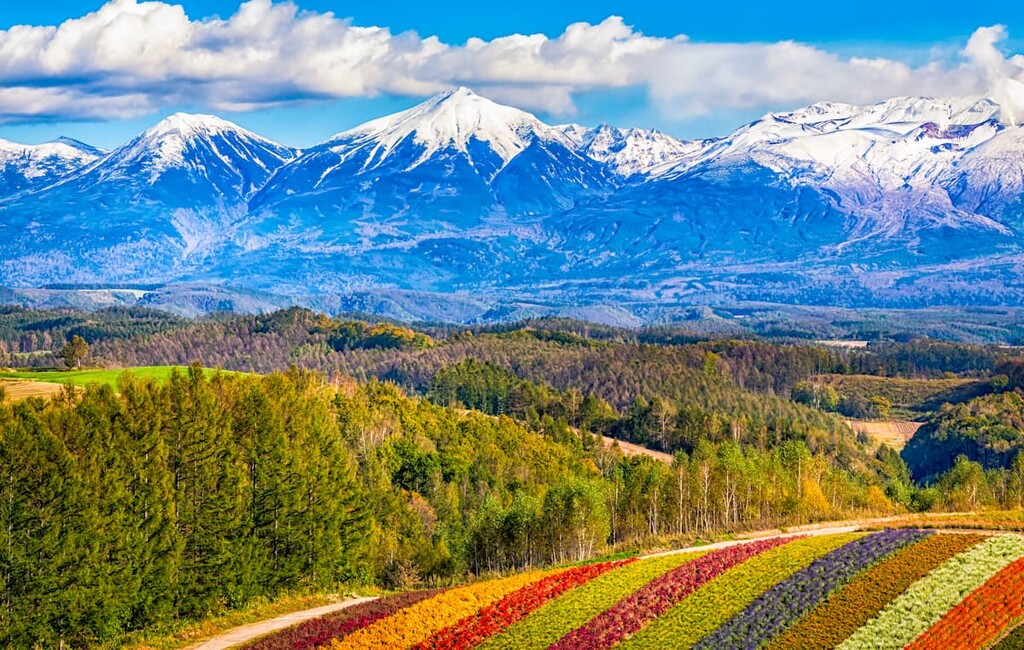
It is worth noting that Hokkaidō is both Japan’s coldest and snowiest region. As a result, it is well-known for its spectacular powder snow, which makes it one of East Asia’s foremost skiing destinations.
The region itself is also highly mountainous and it contains a number of national parks. These include:
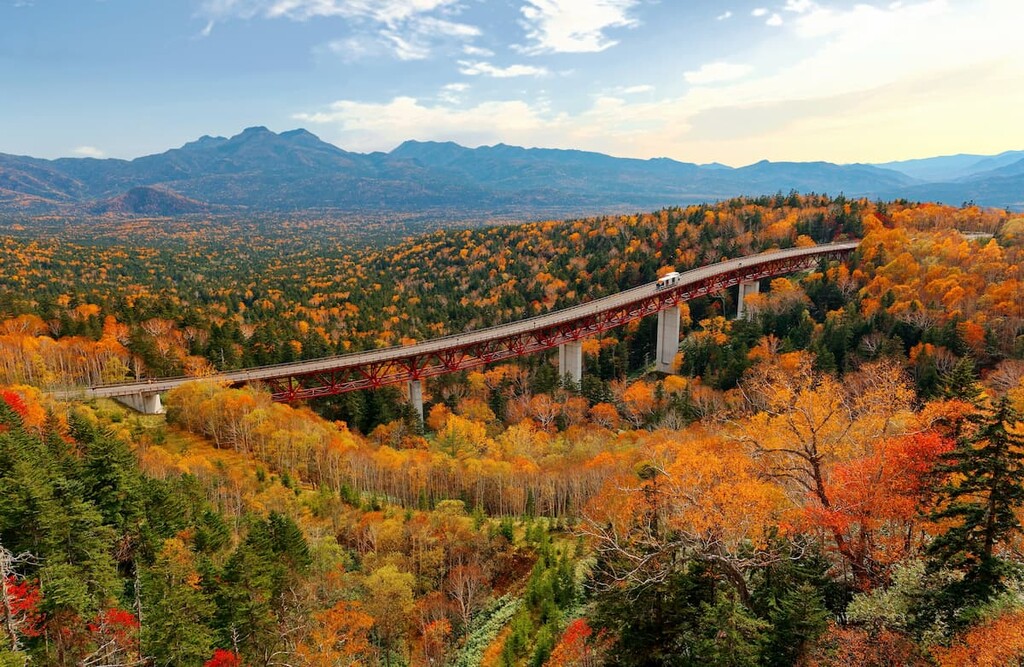
Hokkaidō also contains a handful of quasi-national parks, which are natural areas that are of a slightly lesser size, diversity, beauty, or state of preservation than full national parks. Unlike national parks, which are administered by the Ministry of the Environment, these quasi-national parks are managed by each prefecture.
The quasi-national parks in Hokkaidō include:
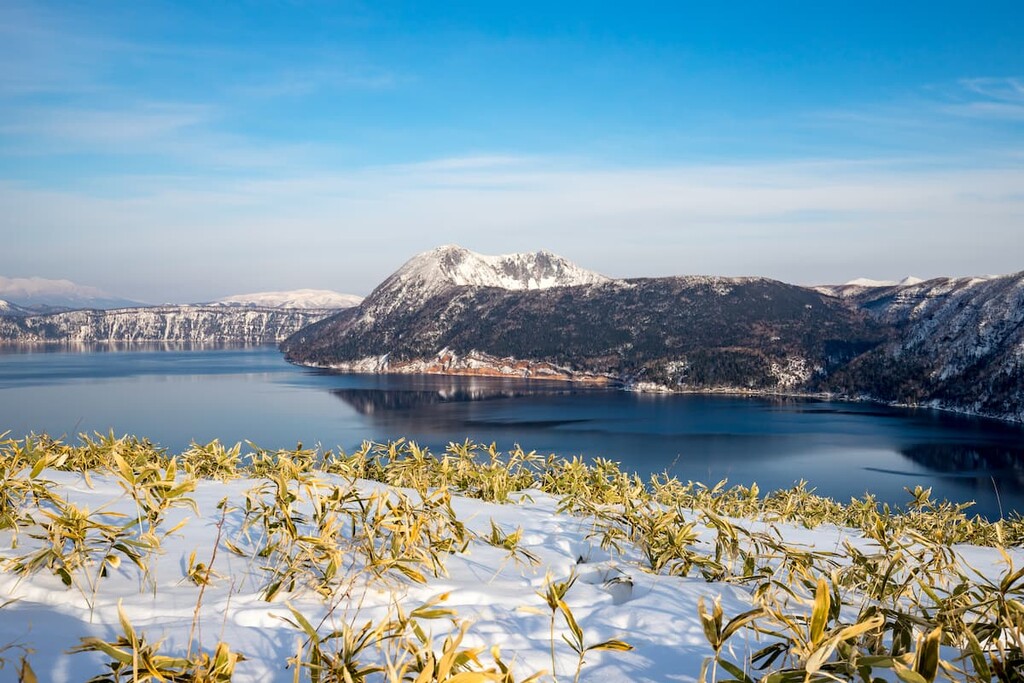
The Tōhoku region (東北地方), or the Northeast region, is the northeasternmost part of the island of Honshū. This region contains the prefectures of:
Unlike some of the regions to the south, Tōhoku is less densely populated. As a result, it has a reputation for being a remote and beautiful region that is a popular destination for both international and domestic tourists. However, it does have a city, Sendai (仙台市), with a population of more than 1 million people.
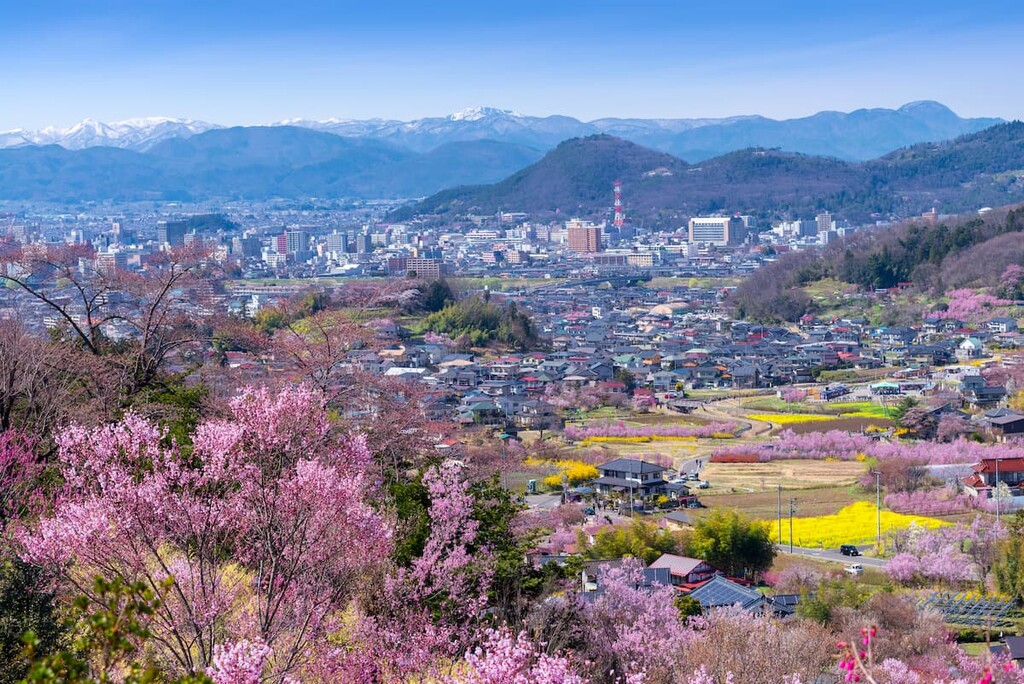
The Ōu Mountains run throughout much of the region and the climate in Tōhoku is fairly cold. It is also home to some popular national parks and quasi-national parks that are worth checking out, including:

Located just to the south of Tōhoku, the Kanto region (関東地方) is one of the most populous areas in Japan. In contains the prefectures of:
As the Kantō region is home to the Greater Tokyo Area (the world’s most populous metropolitan area), it is home to approximately one-third of Japan’s total population. The region therefore has a highly urbanized economy as it is a major center for commerce and trade around the world.
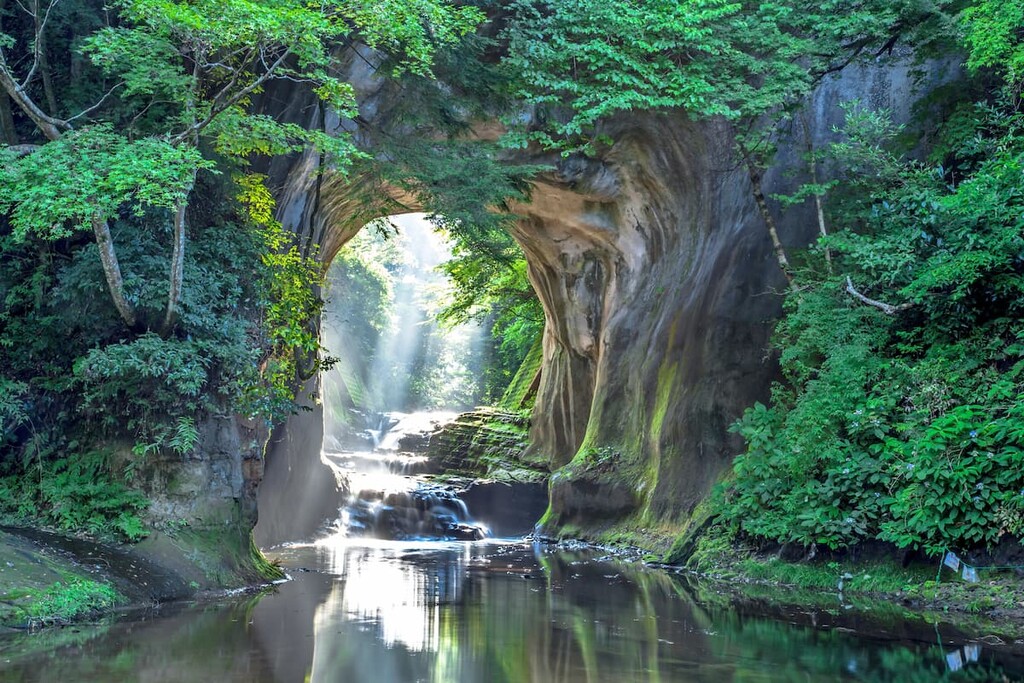
Despite being one of the most densely populated places in Japan, however, the Kantō region still has room for a few, albeit small, national parks and quasi-national parks. Some of the parks found in the area include:
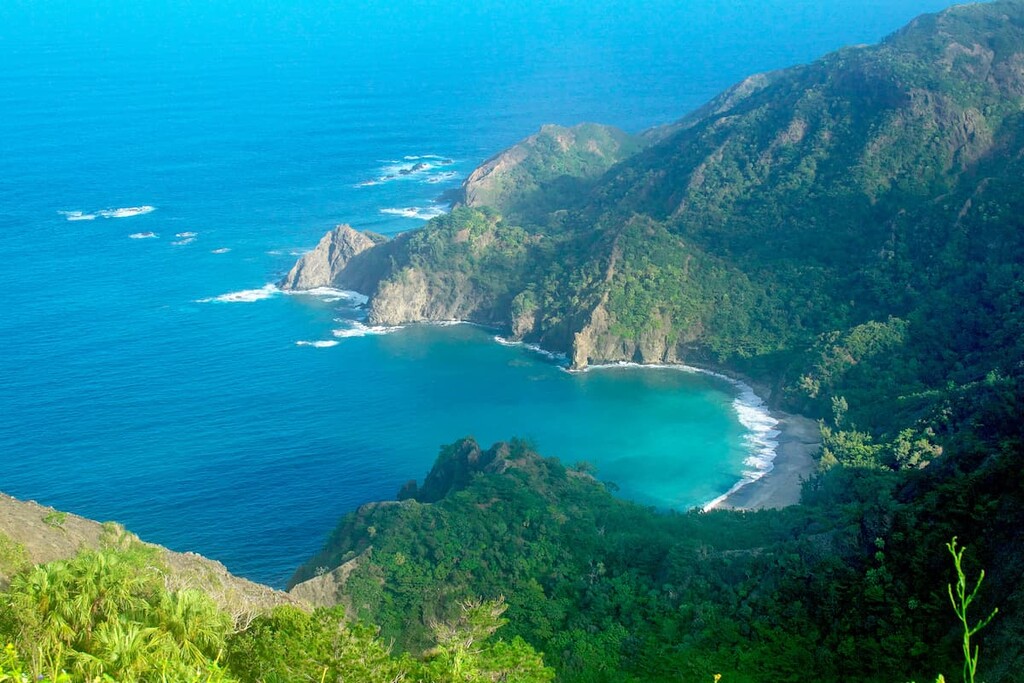
The Chūbu region (中部地方) is situated just to the west of Kantō and to the south of Tōhoku in the middle of the island of Honshū. It contains the prefectures of:

This region is heavily urbanized as well, however, it is home to one of Japan’s most iconic natural features: Mount Fuji (富士山). Indeed, the Chūbu region is highly mountainous and it is home to a collection of fantastic mountain resorts. The region even hosted the 1998 Winter Olympics in Nagano.
As you can imagine in such a mountainous region, there are plenty of national parks and quasi-national parks in Chūbu for visitors and locals to enjoy. These include:
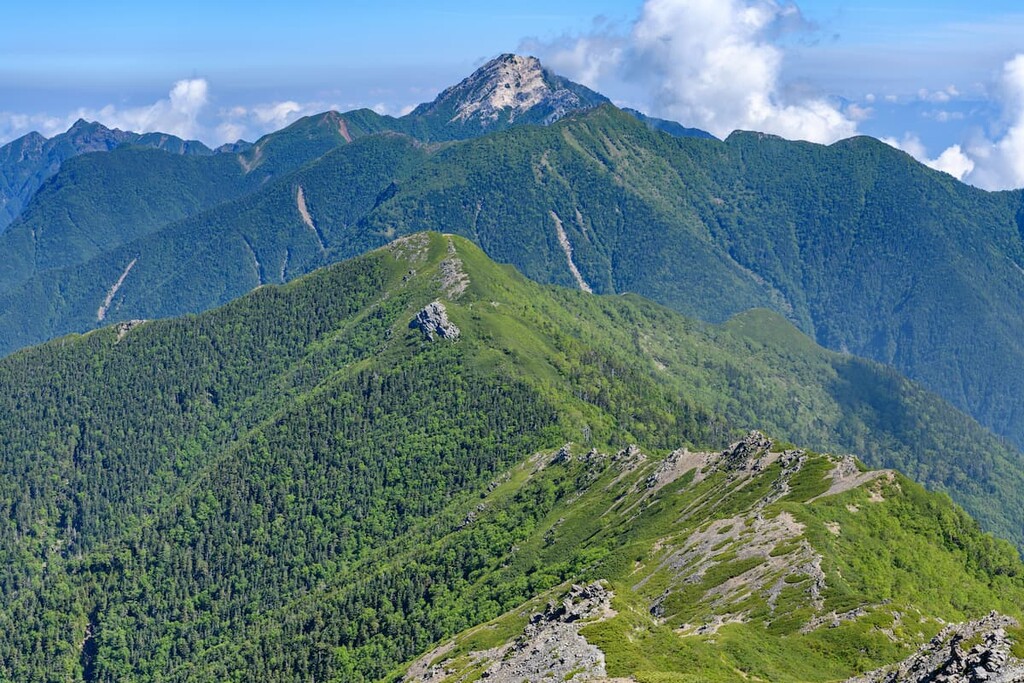
Also known as the Kinki region (近畿地方), the Kansai region (関西地方) is located in the south-central part of the main island of Honshū in Japan. It contains the prefectures of:
While Japan’s largest population center of Tokyo is situated in the Kantō region, the Kansai region is home to the cities of Osaka, Kyoto, and Kobe. This makes it the second-most populous part of the country with an estimated population of around 23 million people.
Japan’s Kansai region has long been a center for culture in the country. The region is known for its food culture as each of its major cities has its own culinary specialities. For example, Kobe beef, takoyaki, and kitsune udon, are all from the Kansai region. Furthermore, the region is known for its sake production as it produces about 45% of the country’s annual output.
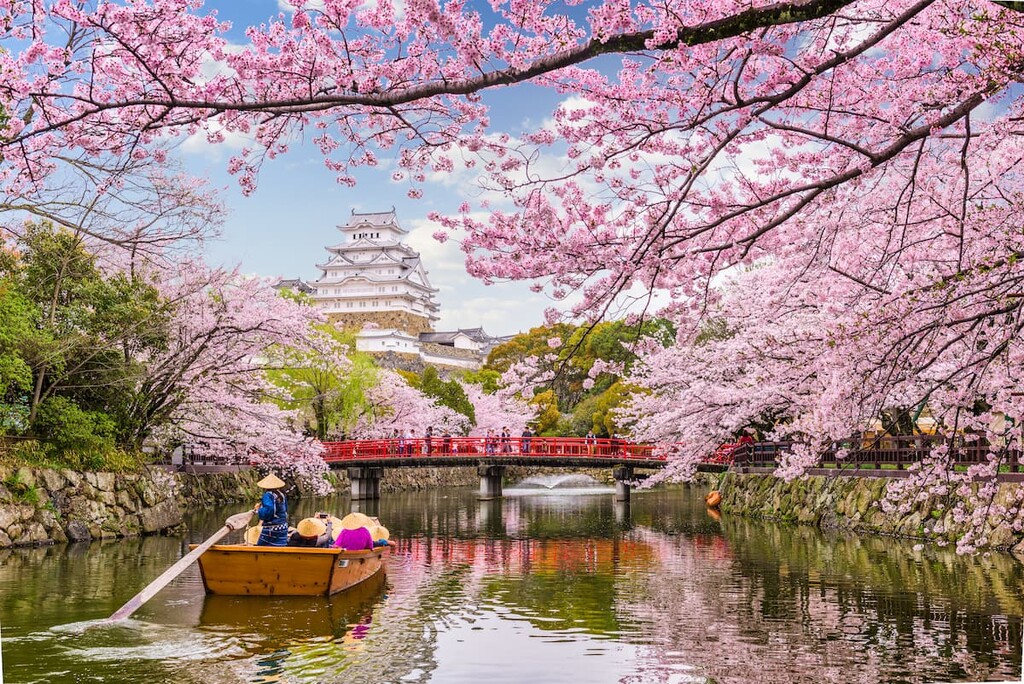
Although the Kansai region is both geographically small and densely populated, it does contain a handful of national parks, including:
It also has an impressive collection of quasi-national parks, such as:
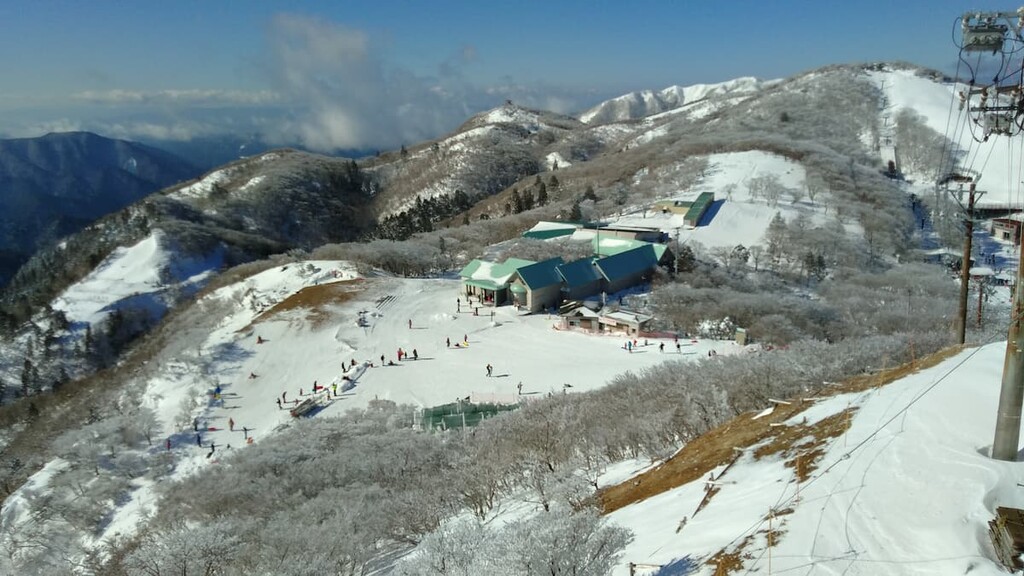
The westernmost region on Honshū, the Chūgoku region (中国地方) is less commonly frequented by tourists, but it boasts a superb collection of cultural sights. Chūgoku contains the prefectures of:
Within Chūgoku, there are a number of sizable cities, such as Hiroshima (広島市) and Okayama (岡山市). While these cities are substantially smaller than those of Kyoto, Tokyo, and Osaka to the north, Chūgoku is home to some important gardens and world heritage sites.
For example, the region contains the Hiroshima Peace Memorial (広島平和記念碑), which was established to serve as a memorial to the more than 140,000 people who were killed by the atomic bombing of the city in 1945.
The region is also home to two of the twelve original castles of Japan: Bitchū Matsuyama Castle (備中松山城) and Matsue Castle (松江城). Matsue Castle is also listed as a national treasure of Japan due to its spectacularly well-preserved condition and cultural importance.
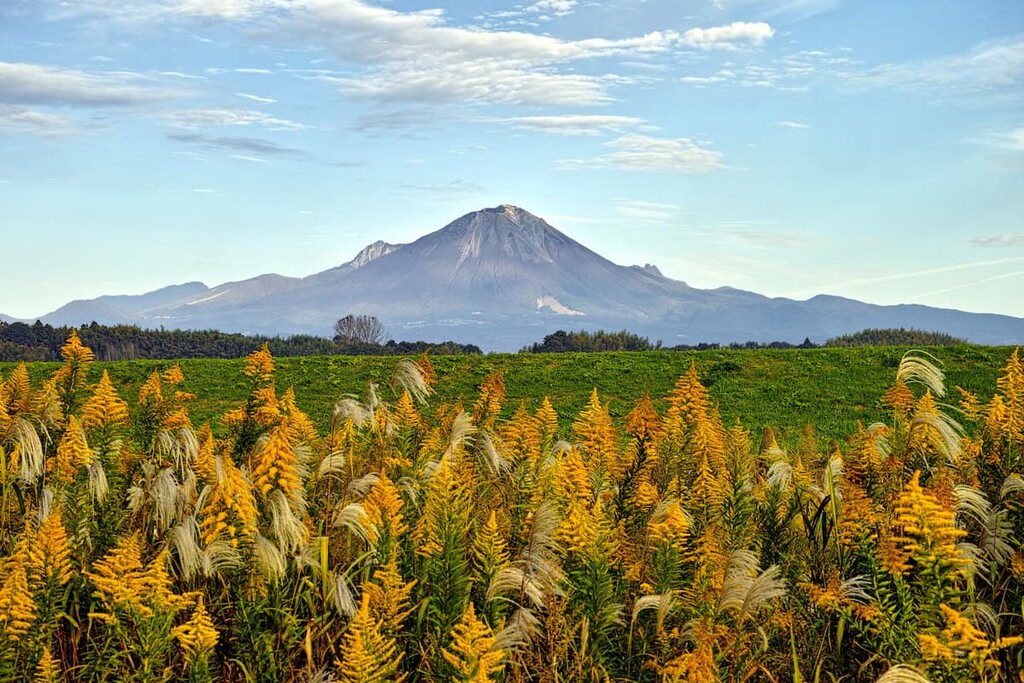
Chūgoku also contains a number of national parks and quasi-national parks for nature lovers to enjoy. These include:
The region of Shikoku (四国地方) contains the entirety of the island of Shikoku (四国), which is the second-smallest of the country’s five main islands, after Okinawa. Shikoku is situated just to the south of Honshū and to the northeast of Kyushu and it contains the prefectures of:
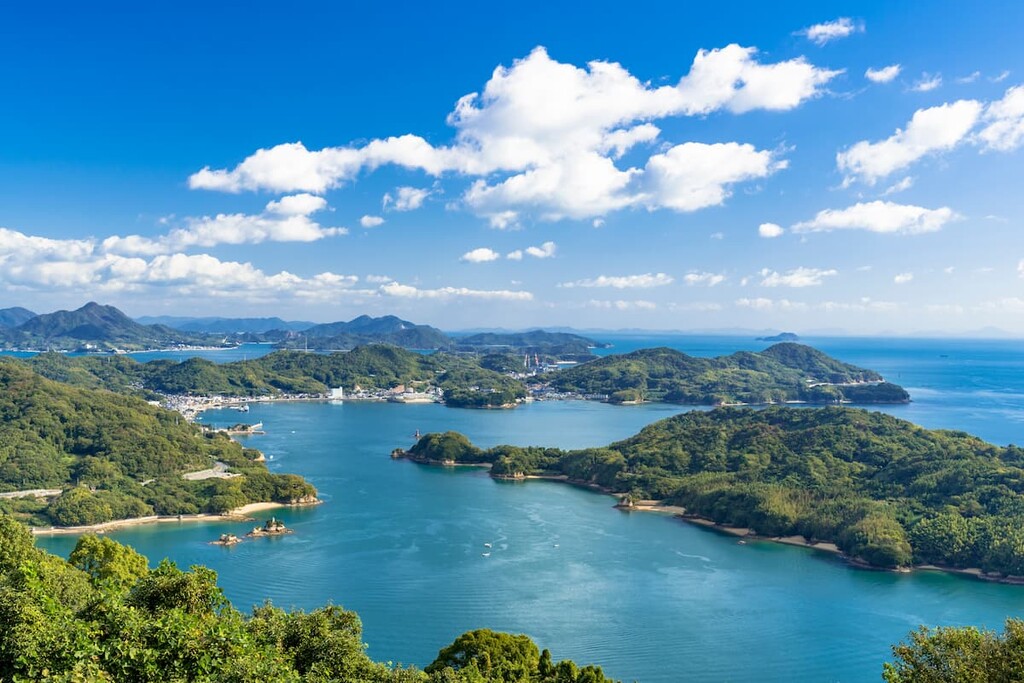
Shikoku has a relatively small population for Japan of about 4 million people. Although it doesn’t contain a city with more than 1 million inhabitants, the region does contain a number of sizable cities, such as Matsuyama (松山市), Takamatsu (高松市), and Kōchi (高知市).
Due to the fact that Shikoku is an island that’s separate from Japan’s main population center, it has long been fairly isolated from the rest of the country. As a result of this isolation, the region developed many of its own traditions, as well as a strong Buddhist tradition.
One of these traditions is the region’s Shikoku Pilgrimage (四国遍路), which is a 1,200 km (750 mi) long pilgrimage that visits 88 temples on the island. The pilgrimage was traditionally made on foot, though some people now use the train for their journey.
Shikoku is also particularly well-known for its food, especially udon. The region’s warm climate also allows it to be a great place to grow fruits, so various citrus fruits like mikan and yuzu are popular here.
Despite the island’s small size, there are still a handful of national parks and quasi-national parks for visitors to check out. These include
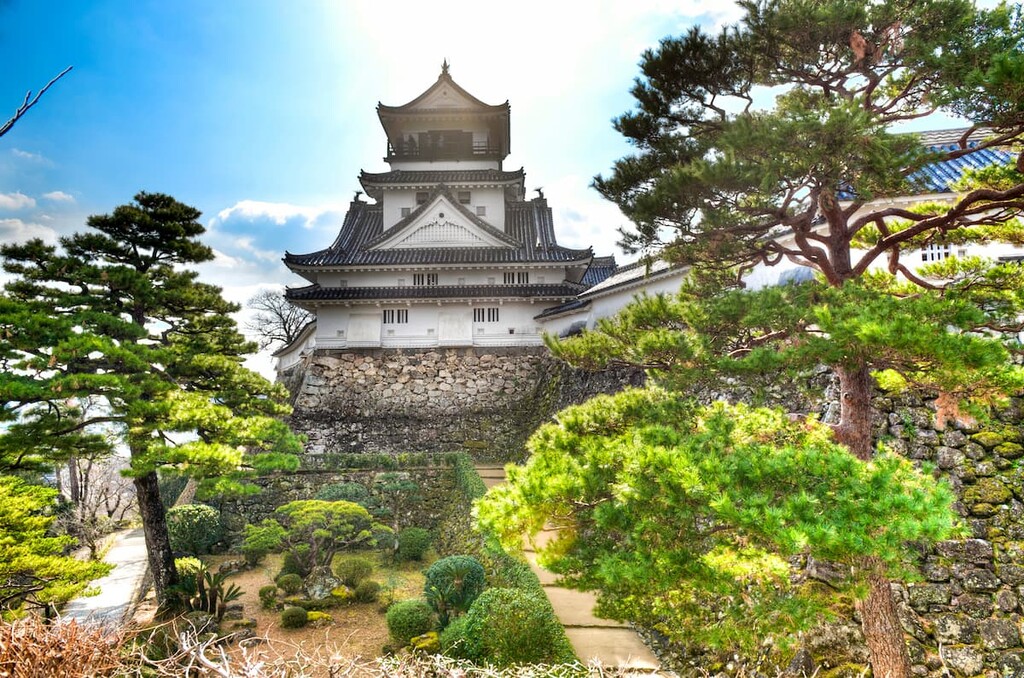
The southernmost region of Japan, Kyūshū (九州地方) contains the main island of Kyūshū (九州) and hundreds of smaller islands, including the Ryukyu Islands (琉球諸島), which extend southward, nearly to Taiwan. It contains the prefectures of:

Although the region of Kyūshū is so topographically varied and expansive, the region itself is actually fairly highly populated. It has a total population of around 14.4 million people, including a large number of people who identify as part of the Ryukyuan ethinic group.
The region has a warm, subtropical climate that’s well suited for agriculture, Kyūshū has a strong rice, tobacco, soy, tea, and sweet potato industry, as well as a decently large production of silk and porcelain.
Throughout all of the region, there are a number of important national parks, such as:
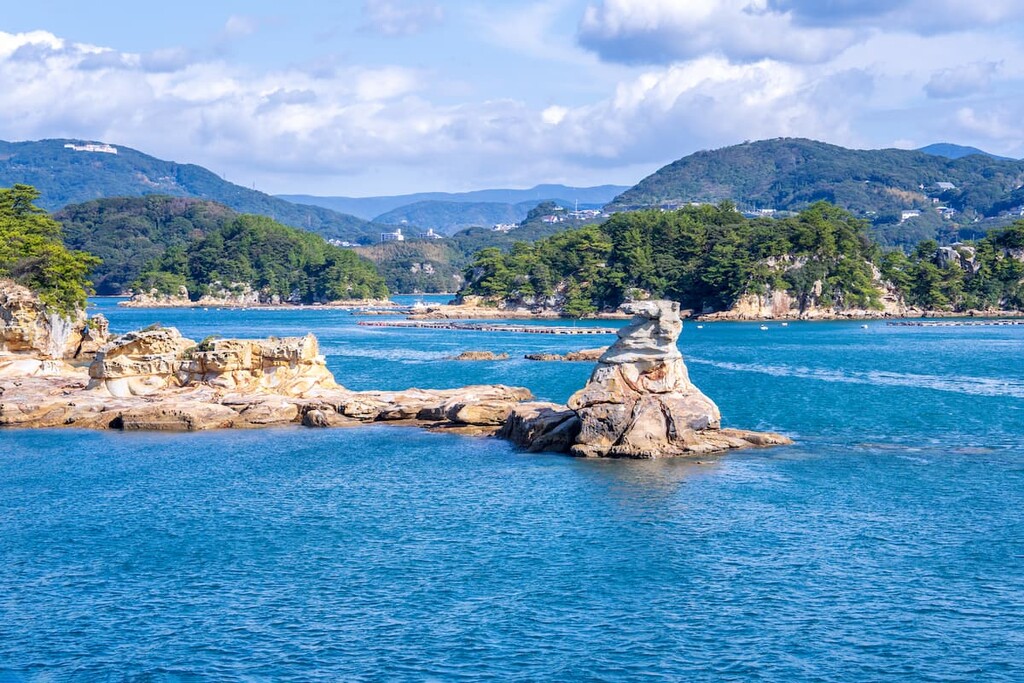
Kyūshū also contains some important quasi-national parks, including:
We should also mention that the Kyūshū region contains Japan’s largest active volcano, Mount Aso (阿蘇山), which is located on the island of Kyūshū. As of 2021, the volcano is actually technically erupting, which has led to some local tourist site closures, though this can change at any time.
The Japanese Archipelago has a unique and complex geologic history. To understand the geologic history of Japan, it’s important to first recognize that the islands of Japan were once attached to the eastern part of Eurasia.
However, over the course of millions of years the Japanese Archipelago drifted eastward as the Phillipine Sea plate subducted under the Amurian plate and the Okinawa plate while the Pacific plate subducted under the Okhotsk plate. This extension that started about 15 million years ago led to the formation of the Sea of Japan.
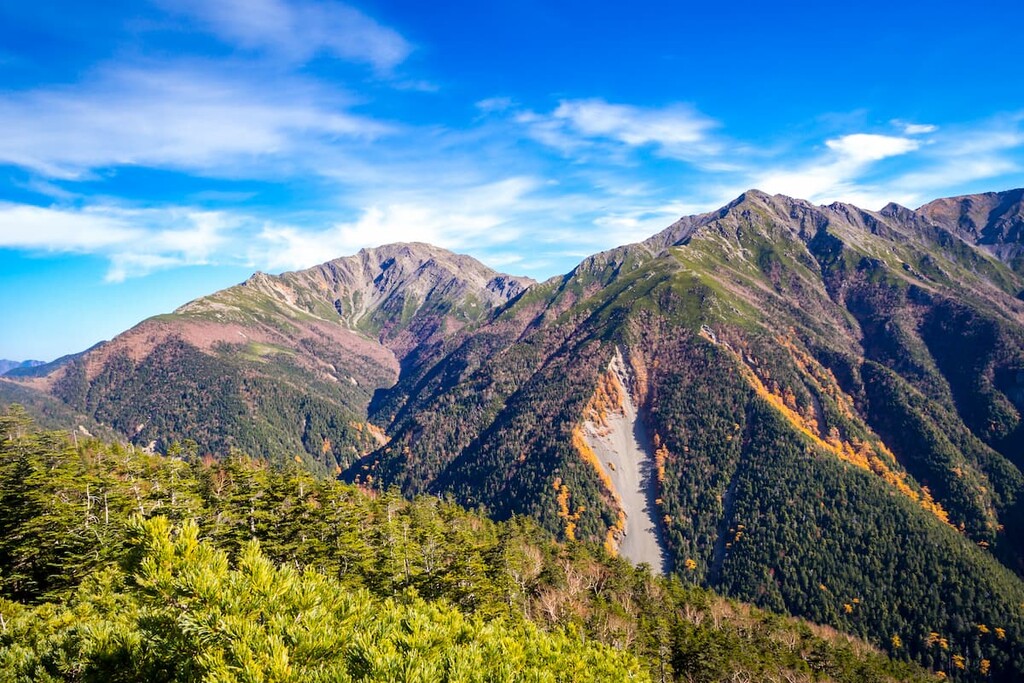
Japan’s location along a number of plate boundaries and within the greater Pacific Ring of Fire makes it a particularly high-risk location for serious earthquakes. Indeed, Japan registers thousands of minor earthquakes each year. In some cases, earthquakes in the country can be very severe, leading to major tsunamis, like that of the 2011 Tōhoku earthquake and tsunami.
Furthermore, Japan is a highly mountainous country with more than two dozen named mountain ranges. Each of these ranges has its own unique features and geologic past, so we’ll take a quick look at some of the most important ranges all here.
Located in the southern part of Honshū, the Akaishi Mountains (赤石山脈) or “Southern Alps” (南アルプス) are a collection of stunning and rugged peaks. The range contains 434 named mountains, the highest and most prominent of which is Mount Ainodake (間ノ岳).
The Akaishi Mountains are perhaps best known for being the source of the Ōi River and Tenryū River. They are situated primarily within Minami Alps National Park, and many of the peaks in the range are listed as part of Japan’s 100 Famous mountains.
Hiking and climbing are fairly popular in the range, particularly on Mount Akaishi and Mount Kita.
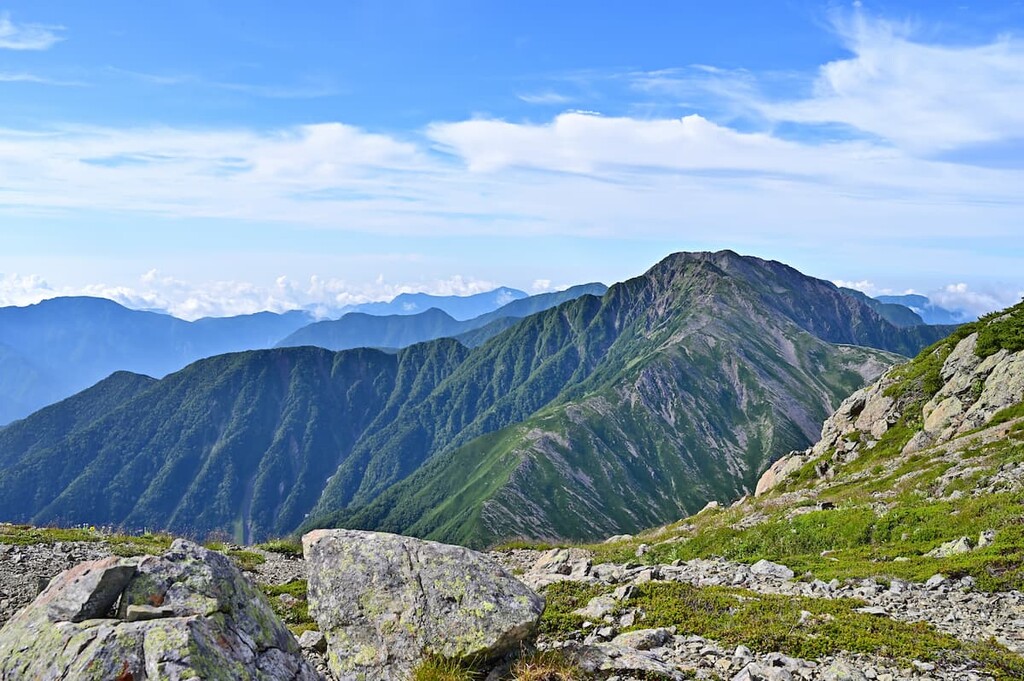
A rugged collection of peaks situated in southwestern Honshū, the Chūgoku Mountains (中国山地) dominate the landscape in Japan’s Chūgoku region. There are 1,760 named mountains in the range, the highest and most prominent of which is Mount Daisen (大山).
The Chūgoku Mountains are particularly notable because they contain large outcroppings of granite. Indeed, some of the largest peaks in the range, including Daisen, are volcanic in origin as this part of Japan is situated along the subduction zone of the Phillipine Sea plate under the Amurian plate.
Furthermore, the range is also a major source of iron sand, which is why the region has long had an ironware industry. There are also many important rivers in the range, such as the Gōnokawa River (江の川ごうのかわ/がわ).
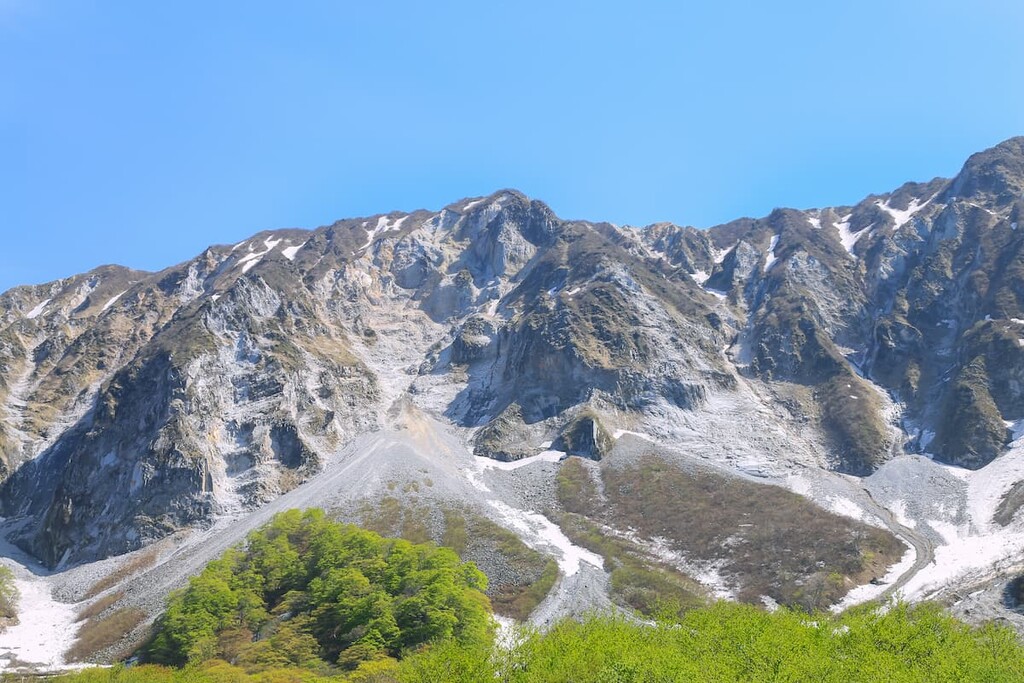
Dominating much of the central part of Honshū Island, the Hida Mountains (飛騨山脈) or “Northern Alps” (北アルプス) is a collection of lofty peaks that form a large Y-shape. The range contains 263 named mountains, the highest and most prominent of which is Mount Hotaka (穂高岳).
Interestingly, the Hida Mountains are one of the very few places in all of East Asia to the south of Kamchatka where glaciers still exist. Indeed, there are three very small glaciers on the slopes of Mount Tate and Mount Tsurugi, thanks to the high snowfall in the area.
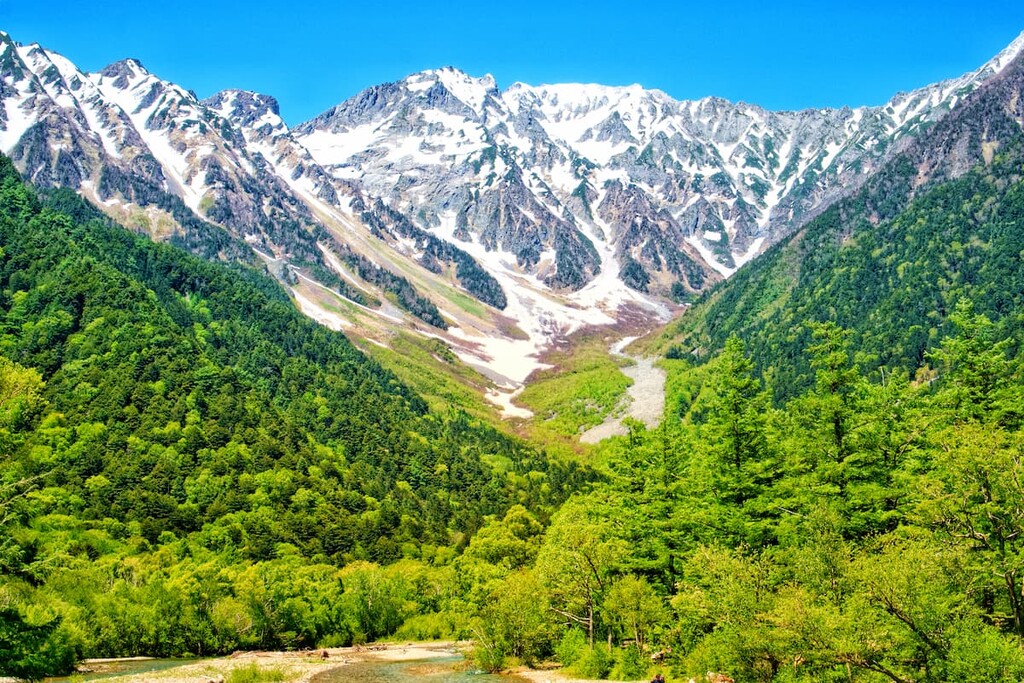
One of the smaller mountain ranges on Honshū, the Iide Mountains (飯豊連峰) is a series of peaks that’s known for its beautiful alpine meadows. The range contains 69 named peaks, the highest and most prominent of which is Mount Dainichi (大日岳).
Although the range is quite small, it has become popular among tourists, particularly among people who want to experience a traditional rural Japanese village. In fact, the neighboring community of Iide is known for its production of Doburoku (どぶろく), a type of sake (日本酒/nihonshu).
The Ishikari Mountains (石狩山地,) are the central mountain range on Hokkaidō. Within the range, there are 138 named mountains, the highest and most prominent of which is Mount Asahi (旭岳).
Geologically, the Ishikari Mountains are volcanic in origin and they include parts of both the Daisetsuzan and the Tomuraushi volcanic groups.
The range is also a great hiking area for the experienced trekker, particularly during the summer months. Nevertheless, there are relatively few established facilities within the range itself, which is often regarded as one of the least developed parts of Japan.
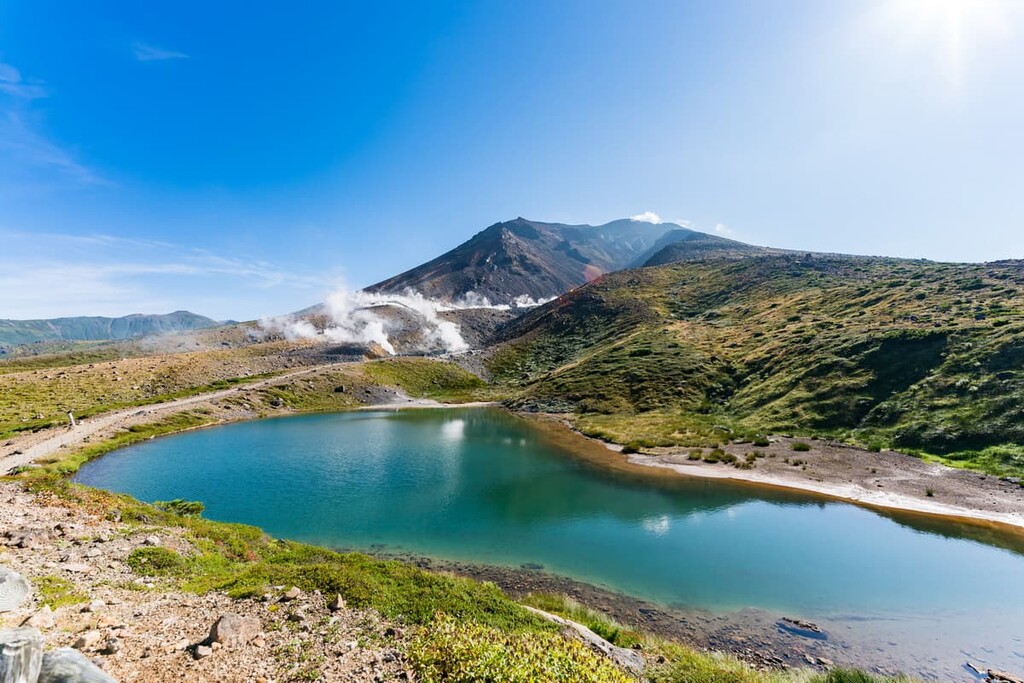
Situated on the Kii Peninsula, the Kii Mountains (紀伊山地) are a grouping of peaks that are known for their spiritual significance and cultural heritage sites. The range contains 604 named mountains, the highest and most prominent of which is Mount Hakkyō (八経ヶ岳).
In particular, the Kii Mountains are known as an important place for Shugendō, a syncretic religion that flourished from the ninth to twelfth centuries. Much of the range is actually protected as part of the Sacred Sites and Pilgrimage Routes in the Kii Mountain Range UNESCO World Heritage Site.
The Kiso Mountains (木曽山脈), or the “Central Alps” (中央アルプス), are a small mountain range located to the northeast of Nagoya and to the west of Tokyo. The range contains 63 named mountains, the highest and most prominent of which is Mount Komagatake (木曽山脈).
Like the other two ranges in the Japanese Alps, the Hida Mountains and the Akaishi Mountains, the Kiso Mountains mostly consist of granites. In the upper elevations of the range there are also some sprawling alpine meadows that are beautiful during the spring and summertime bloom.
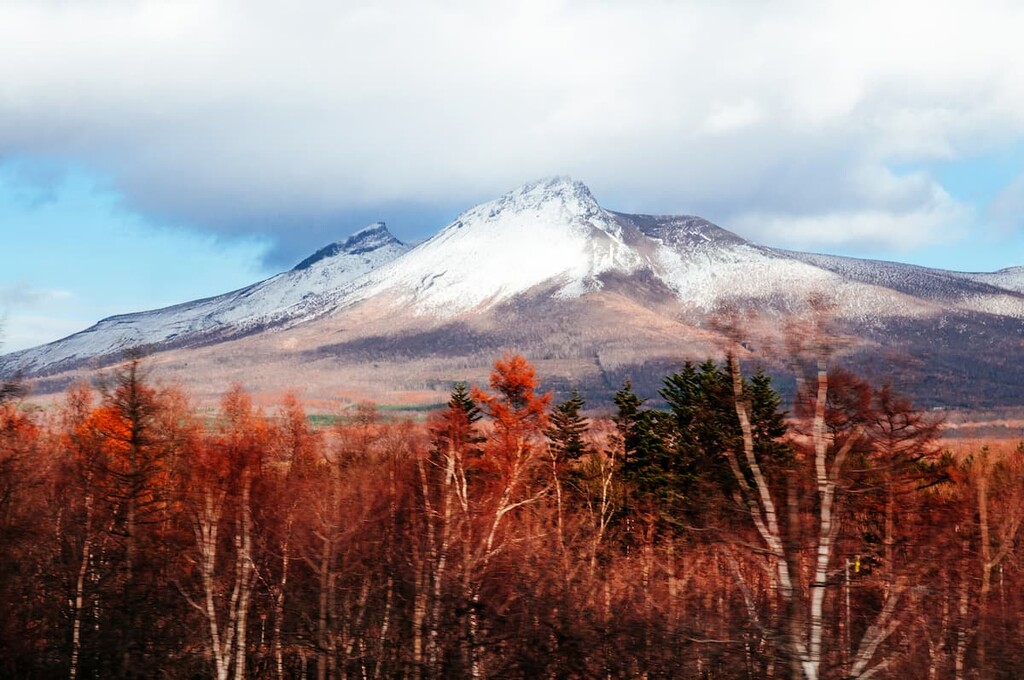
Additionally, the Kiso Mountains feature a popular attraction known as the Komagatake Ropeway (駒ヶ岳ロープウェイ), which is a cable car that takes visitors to the Senjōjiki Cirque (千畳敷カール) on Mount Hōken (宝剣岳). This area is both popular for tourists that want to see the wildflowers and for mountaineers that hope to test their mettle in the rugged peaks.
Stretching some 250 km (160 mi) down the northeastern coast of Honshū, the Kitakami Mountains (北上山地) is a group of broad peaks that dominate the skyline of Iwate Prefecture. There are 563 named mountains in the range, the highest and most prominent of which is Mount Hayachine (早池峰山).
The Kitakami Mountains are actually mostly a large granite eroded plateau, so they are not as jagged and prominent as some of the ranges to the south. Indeed, the range is used fairly heavily for agriculture, particularly in the dairy and beef cattle industry. Visitors to the range may very well see herds of Japanese Shorthorn (日本短角種), which is one of Japan’s native cattle breeds.
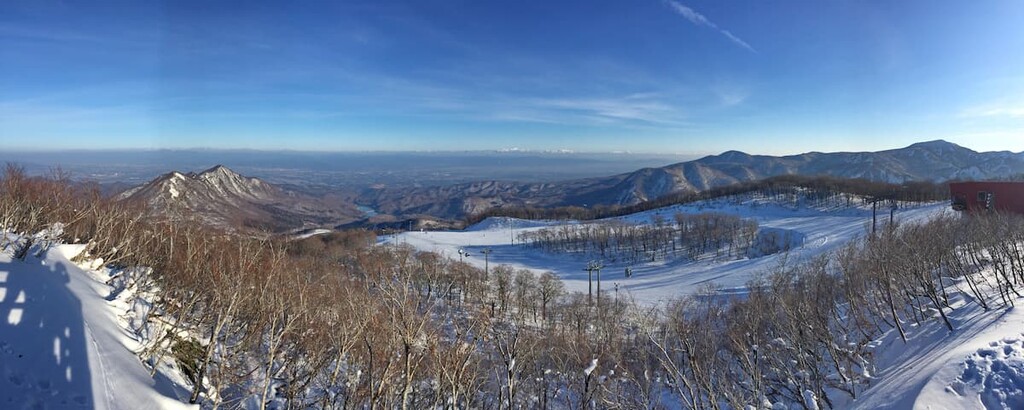
The northernmost range on Hokkaidō, the Kitami Mountains (北見山地) are known for their rolling hills and harsh weather. Within the range, there are 96 named mountains, the highest of which is Mount Teshio (天塩岳).
Like many of the other ranges on Hokkaidō, the Kitami Mountains are fairly remote. Indeed, the range is considered to be one of the wildest parts of the island as it features minimal human development. For the prepared hiker, however there are plenty of treks and climbs to enjoy.
Extending down the western coast of Hokkaidō, the Mashike Mountains (増毛山地) are a beautiful destination for plant lovers and keen hikers. The range contains 46 named mountains, the highest and most prominent of which is Mount Shokanbetsu (暑寒別岳).
As the westernmost range on the island of Hokkaidō, the Mashike Mountains are known for their harsh weather, much of which is precipitation that’s brought to the range through the prevailing winds from the Sea of Japan.
Furthermore, the range is one of the few places in Japan where hikers can check out alpine vegetation at relatively low elevations. Within the range, there are plenty of trails and other activities for visitors to enjoy.
Towering over nearby Tokyo, the Okuchichibu Mountains (奥秩父山塊) are a popular hiking destination in Japan. The range contains 298 named mountains, the highest and most prominent of which is Mount Kita-Okusenjo (北奥千丈岳).
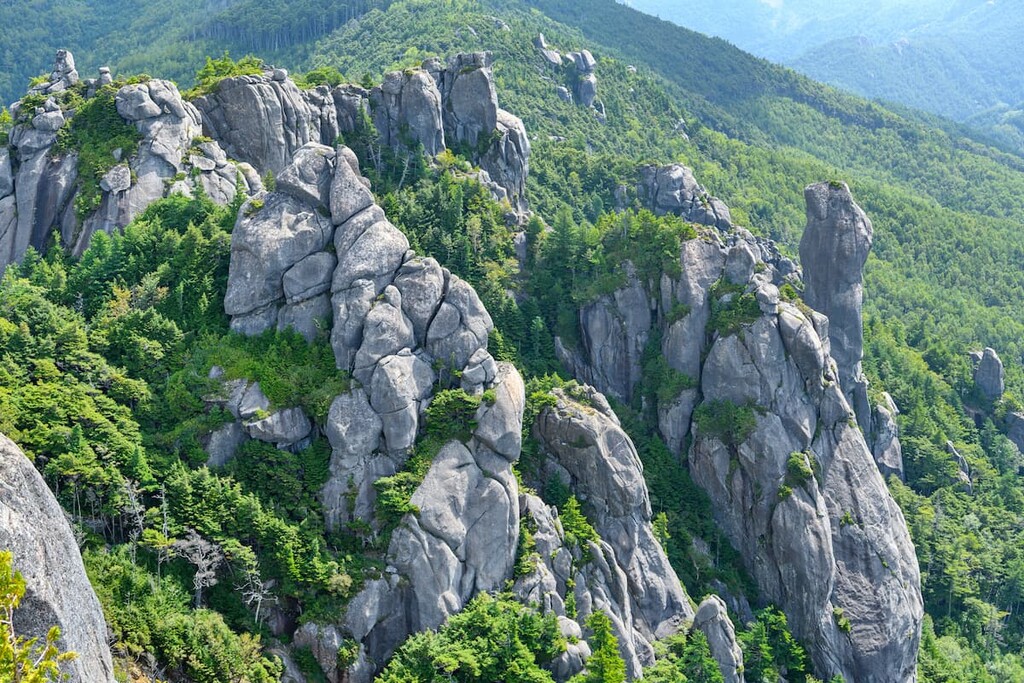
Due to the range’s proximity to Tokyo, the Okuchichibu Mountains have long been a frequent destination for outdoor enthusiasts. The range was once heavily deforested, however, new conservation methods and the establishment of national parks, such as Chichibu-Tama-Kai National Park (秩父多摩甲斐国立公園) have turned the Okuchichibu Mountains into a great place to recreate.
One of Japan’s most iconic mountain ranges, the Ōu Mountains are a chain of peaks that runs from north to south like a spine through the central part of northern Honshū. The range contains 707 named mountains, the highest of which is Mount Iwate (岩手山).
The Ōu Mountains contain many of the 100 famous mountains in Japan as well as a number of important national parks, such as Towada-Hachimantai National Park. Additionally, the range contains some of the best ski resorts on Honshū, so it’s a great place to check out all year long.
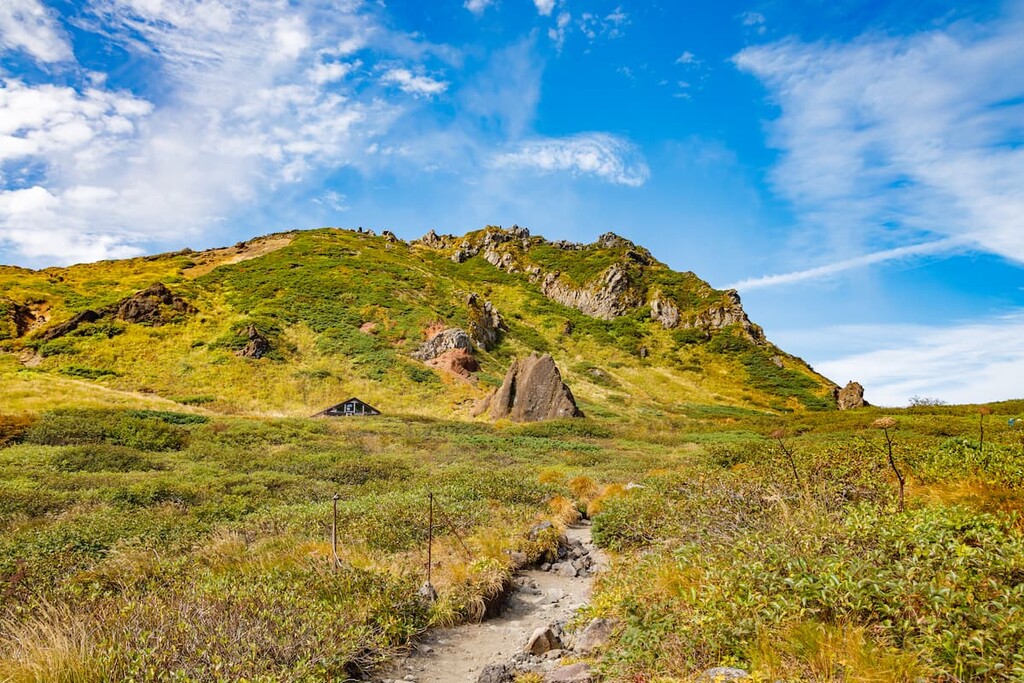
Despite being one of the world’s most urbanized and industrialized nations, Japan is home to a stunning natural landscape.
Of course, the country has struggled with environmental pollution and degradation in the past, particularly in the 1960s. Although Japan still has its current environmental issues, including waste management, deforestation, and fisheries management, as well as the ever-pervasive issue of climate change, the country does contain some beautiful natural resources.
Japan can be roughly divided up into six climatic zones, including the humid continental climate in the north to a humid subtropical climate in the south. The country also contains nine forest ecoregions, and it is home to a wide range of flora and fauna.
Arguably the most famous of Japan’s plants is the cherry blossom, though other species, such as chrysanthemum, Japanese maple, sakaki, azalea, Japanese black pine, and wasabi, are also found in the country. There are also approximately 400 to 500 species of bamboo that grow in Japan.
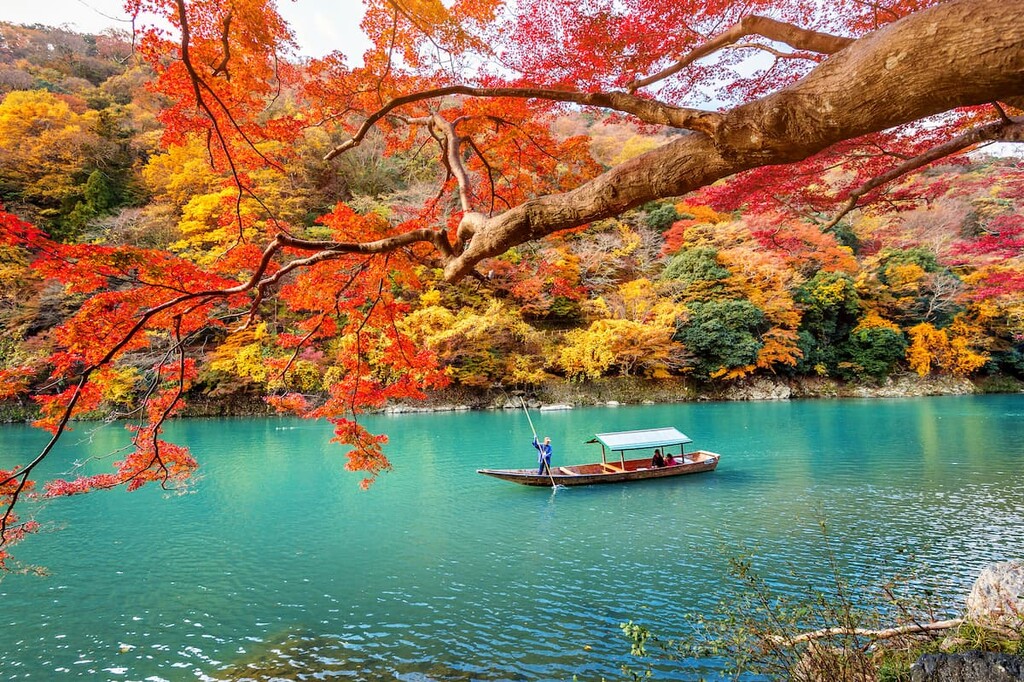
As far as wildlife goes, Japan is home to approximately 130 mammal species, 600 bird species, 70 reptile species, and over 3,000 fish species.
Some of the most famous mammals found in Japan include the Ussuri brown bear, the Asian black bear, the Japanese marten, the leopard cat, the sika deer, and the Japanese macaque (snow monkey). There are also a number of endemic bird species in Japan, including the Japanese woodpecker, green pheasant, and the copper pheasant.
The area that is now part of the country of Japan has been inhabited by humans since at least 30,000 BCE when people of a Paleolithic culture occupied the Japanese archipelago. By about 14,500 BCE, the Japanese archipelago saw the proliferation of a hunter-gatherer culture during a time known as the Jōmon period.
Around 1000 BCE, the Yayoi people began to settle the archipelago, at which time new practices, such as wet-rice farming became common in the region. At the same time, the Ainu people settled in northern Honshū, the Kurils, and Hokkaidō, the latter of which is home to a sizable Ainu population to this day.

It’s believed that Emperor Jimmu then established a kingdom in the archipelago around 660 BCE, beginning a continuous imperial line known as the Imperial House of Japan (皇室), which exists to this day.
Buddhism first came to what is now Japan around the year 552 CE, though it wasn’t widely accepted until later in the sixth century. During the Nara period of the eighth century, legal reforms led to the establishment of the Imperial Court in what is now Nara (奈良市) before it was moved to modern-day Kyoto by Emperor Kanmu.
By the twelfth century, Japan had established a feudal system wherein the region was dominated by a ruling class of warriors that were known as the samurai (侍). There was also a brief period of military government known as the Kamakura shogunate (鎌倉幕府) during the twelfth through fourteenth centuries, though this was overthrown by Emperor Go-Daigo.
The sixteenth century saw the influx of Jesuit missionaries and Portuguese traders in Japan. This established the first direct exchange of commercial goods and culture between Japan and Europe.
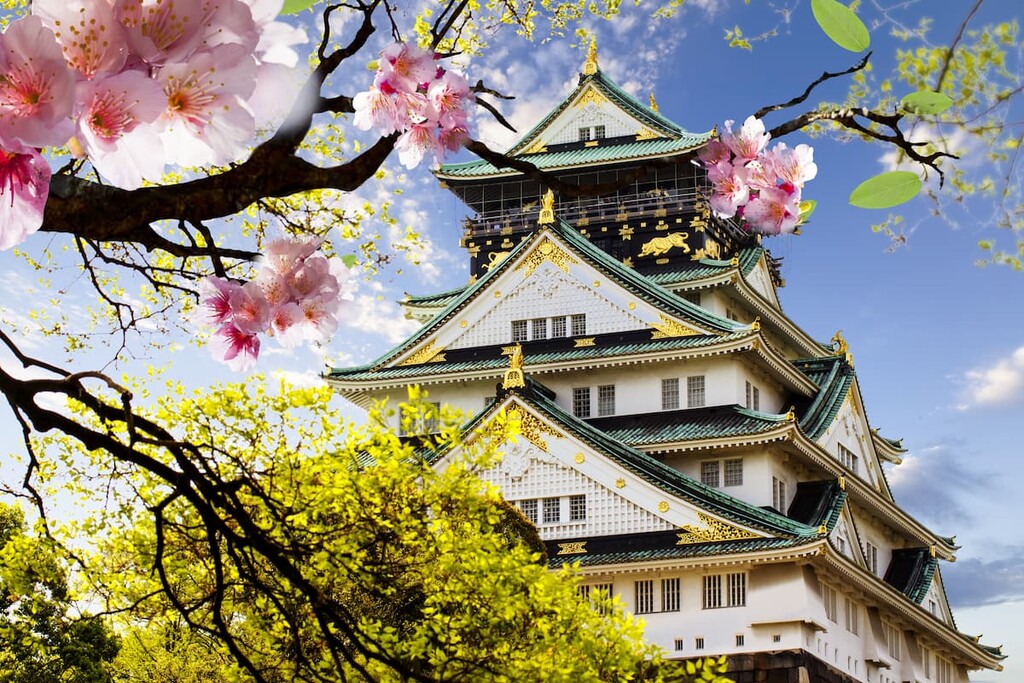
Nevertheless, the sixteenth century was as tumultuous time as multiple daimyō (大名) or feudal lords attempted to consolidate power over Japan. Eventually, Emperor Go-Yōzei established the Tokugawa shogunate (徳川幕府) with Tokugawa Ieyasu as its first head and Edo (modern-day Tokyo) as its capital.
This began a time called the Edo period, which saw a decent amount of political unity and a substantial amount of economic growth from 1603 to 1868.
During the Edo period and the rule of the Tokugawa shogunate, Japan practiced a policy of sakoku (鎖国) or “closed country” where the archipelago was mostly isolated from the outside world.
Commodore Matthew Perry of the US Navy forced the end of this isolationist practice in 1854 when he arrived in Japan and forced the Japanese to sign the Convention of Kanagawa (神奈川条約). This convection allowed for the opening of the ports of Hakodate (函館市) and Shimoda (下田市) to US vessels.
Not long afterward, the country plunged into a revolution known as the Boshin War (戊辰戦争), which saw the end of the shogunate and the restoration of the Imperial Court under Emperor Meiji. This event also saw the introduction of the Meiji Constitution and the establishment of parts of Japan’s modern government, such as the National Diet (国会).
During this time, Japan also colonized Hokkaidō and passed a number of measures to displace the Ainu from their ancestral homelands on the coastal parts of the island. These discriminatory practices continued for well over a century, though Japan did pass a movement to legally recognize the Ainu as an Indigenous people of Japan in 2019.

Meanwhile, after the Boshin War, Japan became a highly urbanized and industrialized economy. The country also fought a number of wars, including the First Sino-Japanese War and the Russo-Japanese War. Japan also joined the Allies in World War I, which allowed them to seize German landholdings in the Pacific.
Although Japan was on the side of the Allies in World War I, political and social unrest after the 1923 Great Tokyo Earthquake led to a drastic shift in the country’s politics. Japan invaded and occupied Manchuria in China in 1931 and then it signed a pact with Nazi Germany and became part of the Axis Powers in World War II.
As a result of its repeated invasions of China, Japan also fought the Second Sino-Japanese War from 1937 to 1945. Japan also invaded what is now Vietnam, Laos, and Cambodia (then French Indochina) and then attacked the US at Pearl Harbor in Hawaiʻi in 1941.
During World War II, Japan engaged in frequent battles in the Pacific Theater, particularly with the United States and the Soviet Union. After the Soviet Union invaded Manchuria and after the US dropped two atomic bombs on Hiroshima and Nagasaki, Japan unconditionally surrendered to the Allied Powers on September 2, 1945, effectively ending World War II in Asia.
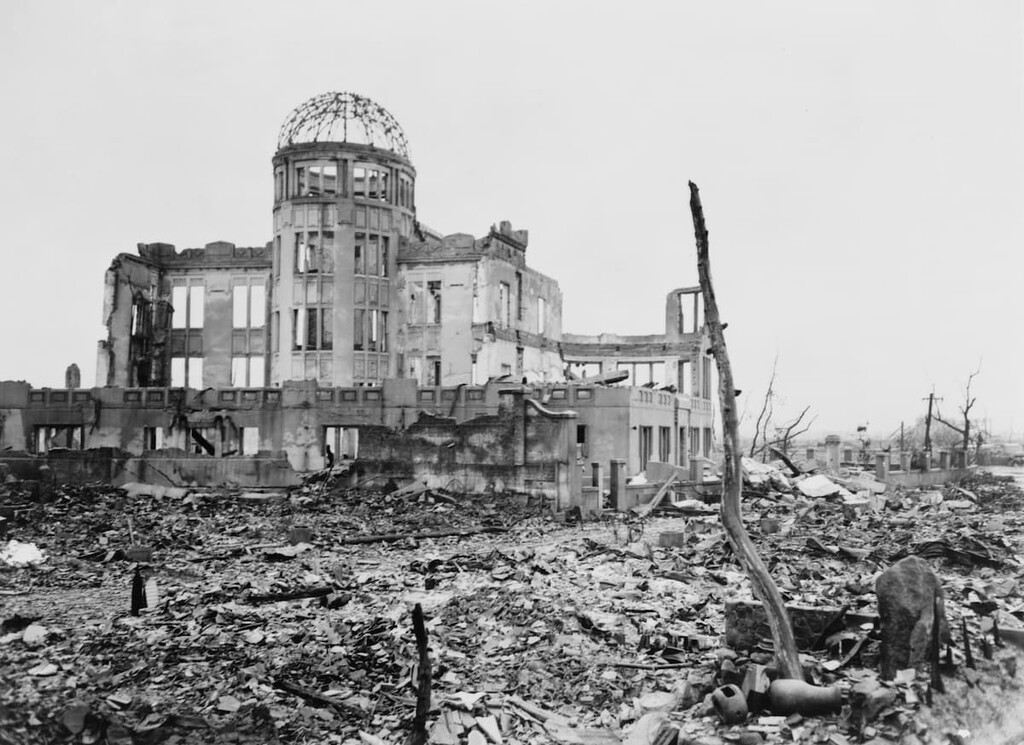
After the surrender of Japan during World War II, the United States occupied Japan, which was the only time in the country’s history that it was occupied by a foreign power. During this time, the country’s constitution was greatly overhauled.
The occupation of Japan ended in 1952 with the signing of the Treaty of San Francisco. Japan became a member of the United Nations in 1956 and it has since become one of the world’s foremost economic powers.
In more recent years, Japan has situated itself as a hub for culture and innovation. Its most recent major event is arguably that of the 2011 Tōhoku earthquake, which registered as a magnitude 9.0 on the moment magnitude scale. The earthquake also caused a tsunami and the Fukushima Daiichi nuclear disaster, which was the worst nuclear accident since the Chernobyl disaster in what is now Ukraine in 1986.
In 2019, Emperor Akihito also abdicated his throne, making him the first emperor to do so since the early nineteenth century. This abdication also marked the ending of the Heisei era and the start of the Reiwa era and the beginning of the reign of Emperor Naruhito, Japan’s 126th monarch.

Despite its highly urbanized landscape, there are plenty of superb places to hike and adventure in Japan. Indeed, the country’s abundance of mountain ranges and varied topography bodes well for the keen hikers among us. With that in mind, here are some of the best hiking destinations to check out in the country:
Out of all of Japan’s mountains, none is more famous than Mount Fuji (富士山). In addition to being the country’s highest peak, Mount Fuji’s near-perfect conical shape makes it an iconic part of Japan’s landscape.
Visitors can venture to the mountain, which is located in Fuji Hakone Izu National Park (富士箱根伊豆国立公園), just 100 km (60 mi) to the southwest of Tokyo. Although Fuji is an active stratovolcano that’s covered in snow for much of the year, it is possible to climb it, particularly during the summer months.
However, Fuji Hakone Izu National Park is about more than just Mount Fuji. In fact, if you’re looking to get away from the crowds a bit, there are dozens of lakes, islands, waterfalls, and hiking trails in the park. So, it’s well worth a visit if you’re looking to see some of the most beautiful landscapes in the country.
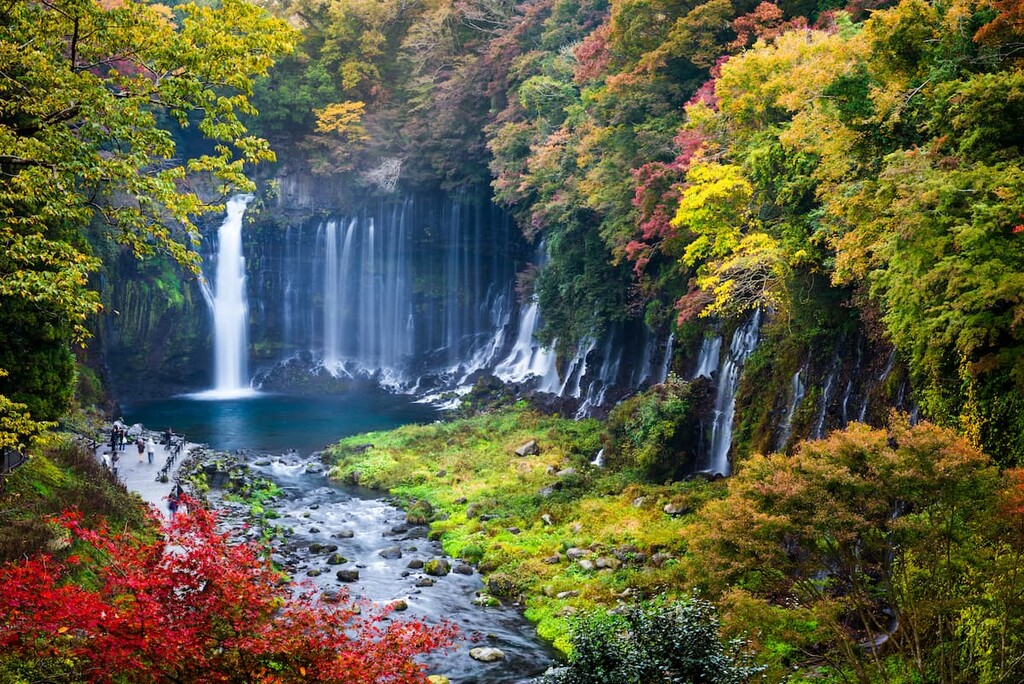
Often considered to be one of the most visually appealing parks in Japan, Nikkō National Park (日光国立公園) is a large protected area that’s situated just to the south of Fukushima. The park was actually initially established as an imperial park by the National Diet in 1911, but it was designated as a national park in 1934.
These days, it is famous for its gorgeous scenery and its many cultural sites. The park contains a number of important Shinto shrines and Buddhist temples, including those that are within the Shrines and Temples of Nikkō UNESCO World Heritage Site.
Within the world heritage site, visitors can walk around the more than 100 protected buildings in the park. Many of the shrines and temples in the park date back to the seventeenth century and many are immaculately preserved.
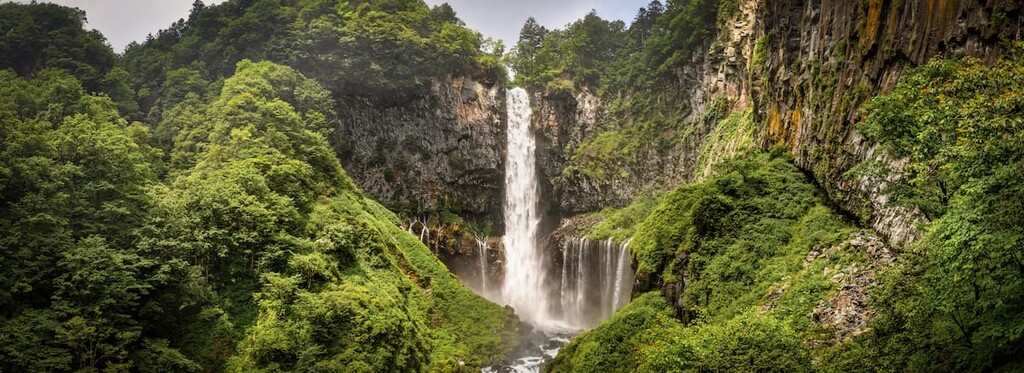
For a chance to see one of the most unique parts of Japan’s landscapes, a trip to Sanin Kaigan National Park (山陰海岸国立公園) isn’t to be missed the park is located in southern Honshū near Kyōto and it extends down the coast from Kyōtango to Tottori.
Within Sanin Kaigan National Park, visitors can see first-hand the region’s beautiful breaches and pristine waters. There are endless caves and sea cliffs in the park, too, which is also protected as a UNESCO Global Geopark called San'in Kaigan Geopark (山陰海岸ジオパーク).
Arguably the most famous feature of the park is the Tottori Sand Dunes (鳥取砂丘), which is one of the country’s major sand dune system. Visitors can walk on the dunes, which make you feel like you’ve been transported to the Sahara Desert.

One of Japan’s most remote and wild landscapes, Shiretoko National Park (知床国立公園) is a protected area that encompasses much of the Shiretoko Peninsula on Hokkaidō. The park contains 16 named mountains, the highest and most prominent of which is Mount Rausu (羅臼岳).
Unlike much of the rest of the country, Shiretoko National Park is almost exclusively accessible only by boat or foot. The park contains one of the country's largest brown bear populations. It is also protected as a UNESCO World Heritage Site and there is a push for it to be managed jointly with parts of the Kuril Islands, which are claimed by Russia, though are home to some peoples of Ainu descent.
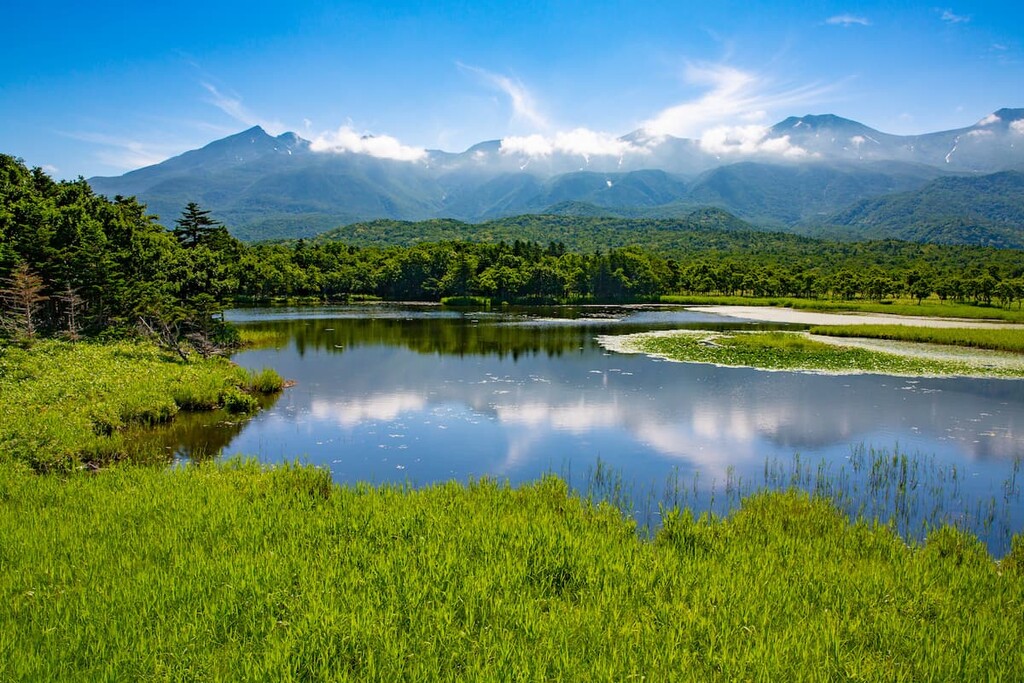
For skiing and snowboarding enthusiasts, there are more than 550 ski resorts in Japan. However, most of them have only up to 10 km (6 mi) of slopes in total. They are located throughout the country in its highest and largest mountain ranges. On the administrative map, the country’s major ski regions (in descending order) are Nagano, Hokkaidō, Niigata, Gunma, and Fukushima, where most resorts are concentrated, as well as the largest of them.
The largest ski resort is Shigakogen Mountain Resort in Nagano with more than 80 km (50 mi) of slopes and more than 50 ski lifts in total.
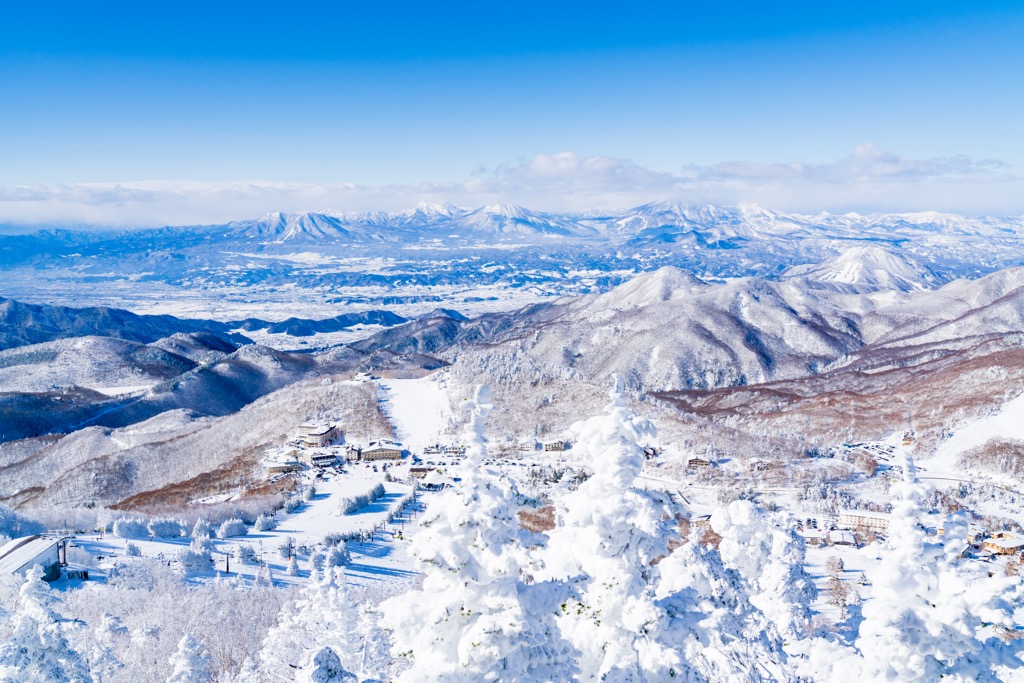
Other major areas for skiing in Japan with more than 30 km (19 mi) of slopes and more than 5 ski lifts each include the following in descending order of size:
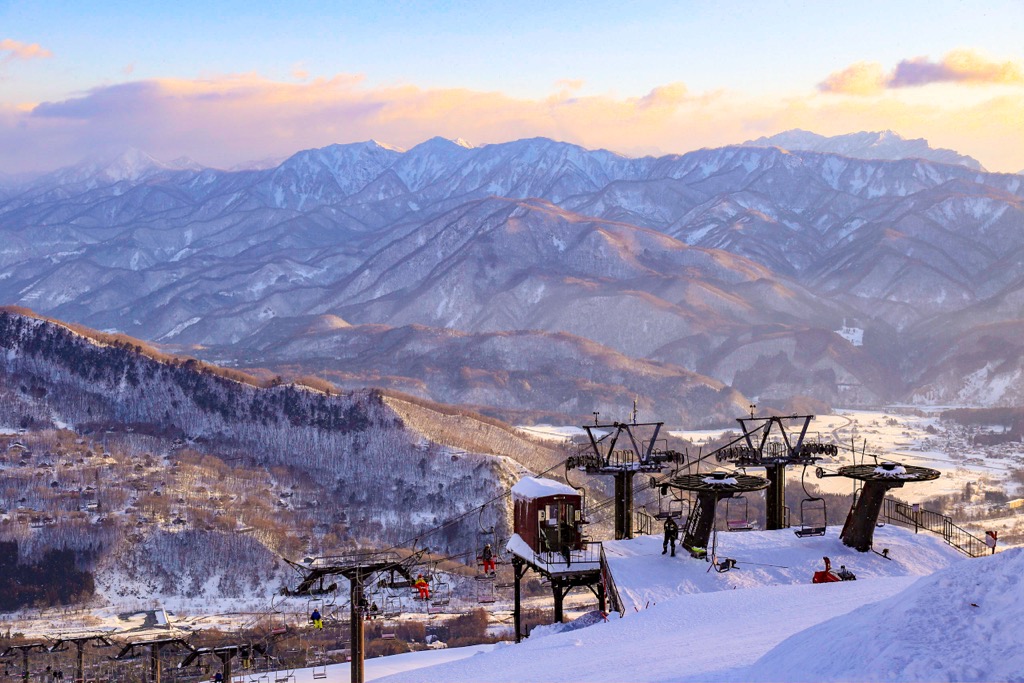
Then there are about the same number of resorts in Japan with a total length of slopes of more than 20 km (12 mi).
The three main ski resorts near Tokyo are Ogna Hotaka to the north of the city with more than 15 km (9.3 mi) of slopes and more than 5 ski lifts, and Sun Meadows to the west and Fujiten Resort near the Mount Fuji to the south with more than 8 km (5 mi mi) of slopes and more than 3 ski lifts each.
Check the Japan ski resorts map in the World Mountain Lifts section of the site. It includes information about open ski lifts / slopes in Japan in real-time with opening dates and hours. There are also year-round cable cars, funiculars, cog railways, aerial tramways, and all other types of mountain lifts.
Japan is known for its fantastic city life and beautiful urban landscapes. Although we can’t possibly discuss all of the country’s major cities here, these four cities are some of the best places to check out during your next trip to Japan:
The world’s most populous metropolitan area, as well as the capital and most populous city of Japan, Tokyo (東京都) is a major city situated in the southeastern part of the main island of Honshū. Tokyo is home to an estimated 13.9 million people, while an additional 23.5 million people live in the surrounding metropolitan region of the city.
Interestingly, Tokyo got its start as a small fishing village named Edo, but it became a major urban area during the eighteenth century. Nowadays, Tokyo is one of the world’s leading financial centers and it is a cultural hub for the country.

Visitors to Tokyo have no shortage of important sights to see and enjoy. The city’s architecture is dominated by modern buildings, though it also contains a large number of urban gardens as well as four national parks. What’s more, there are plenty of museums, markets, theaters, and sporting events to check out in the city during your visit.
Kyoto (京都市) is the capital city of Kyōto Prefecture, which is located in the south-central part of the island of Honshū. It is home to more than 1.4 million people and, when combined with nearby Osaka and Kobe, Kyoto is part of the Keihanshin (京阪神) metropolitan region, which has a total population of nearly 20 million people, or 15% of the country’s population.
Although Kyoto is also a major economic area in Japan, it is perhaps best known as the cultural capital of the country. It currently contains a number of UNESCO World Heritage Sites, many of which are Shinto shrines, Buddhist temples, and gardens, as well as the Kyoto Imperial Palace, the Katsura Imperial Villa, and the Kiyomizu-dera (清水寺) temple.
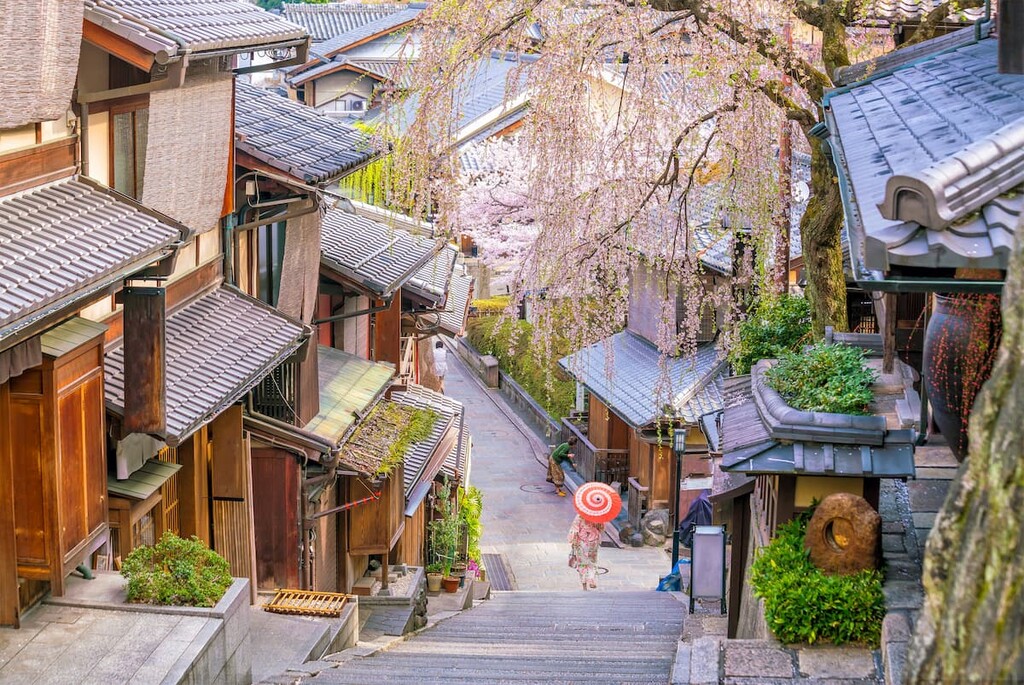
Japan’s northernmost major city, Sapporo (札幌市) is a metropolitan area located on Hokkaidō. It is home to more than 1.9 million people and it is one of the country’s most popular tourist destinations outside of Honshū.
Sapporo is perhaps best known as being the host of the 1972 Winter Olympic Games. However, the city’s popularity has grown tremendously in recent years. Due to Hokkaidō’s high snowfall and cold temperatures, the city hosts the annual Sapporo Snow Festival, and it is a popular starting point for ski vacations on the island.
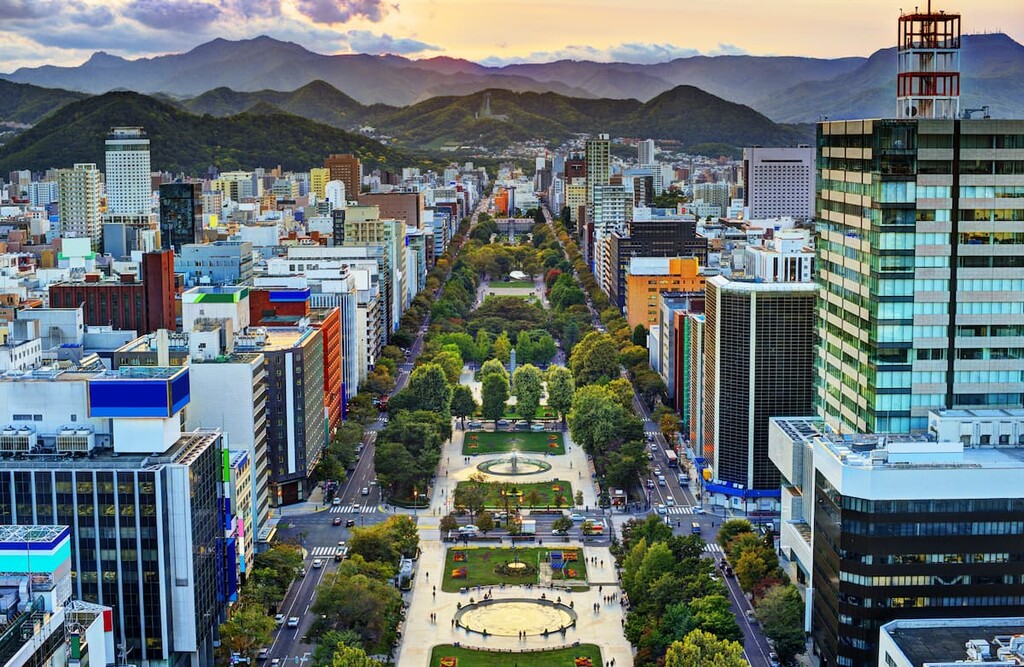
One of the largest cities in southern Japan, Nagasaki (長崎市) is the capital and most populous city of Nagasaki Prefecture on the island of Kyūshū. The city currently has a population of about 400,000 people.
During the sixteenth through nineteenth centuries, Nagasaki was an important trading port in the region. It was the primary destination for sailors from Portugal and the Netherlands who wanted to trade with Japan.
That being said, Nagasaki is best known for having been bombed with an atomic bomb on August 9, 1945 during World War II. Nagasaki was the second of two cities in Japan to have been attacked with an atomic bomb after Hiroshima. It’s believed that between 39,000 and 80,000 people—mostly civilians—were killed during the bombing of Nagasaki.
The city has since rebuilt from the attack, and it has re-established itself as a major shipbuilding center and port. Nagasaki contains dozens of important cultural sites for visitors to enjoy, as well as a number of memorials and museums dedicated to the remembrance of the victims of the atomic bomb.
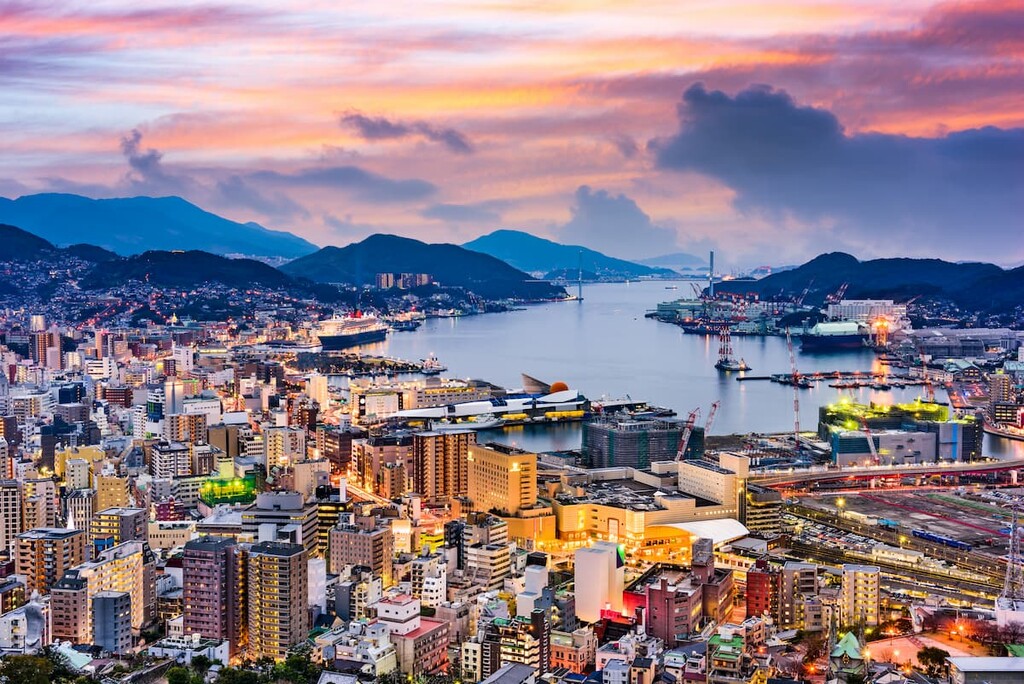
Explore Japan with the PeakVisor 3D Map and identify its summits.

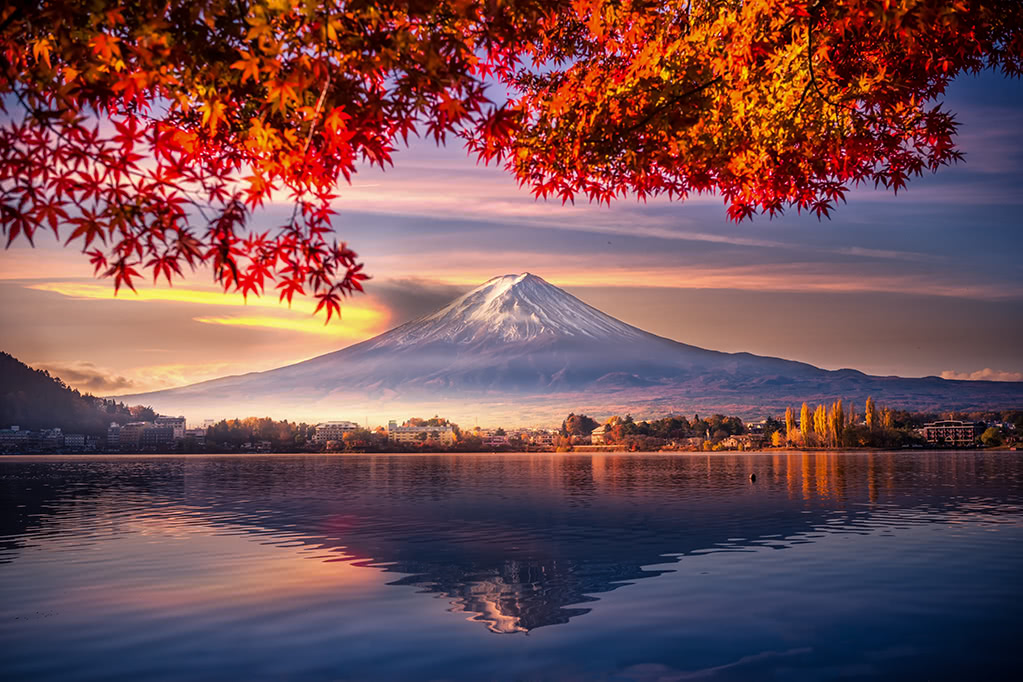






ja100
ultra
japan-3000ers
japan-ultras
ja100
ultra
volcano
japan-ultras
